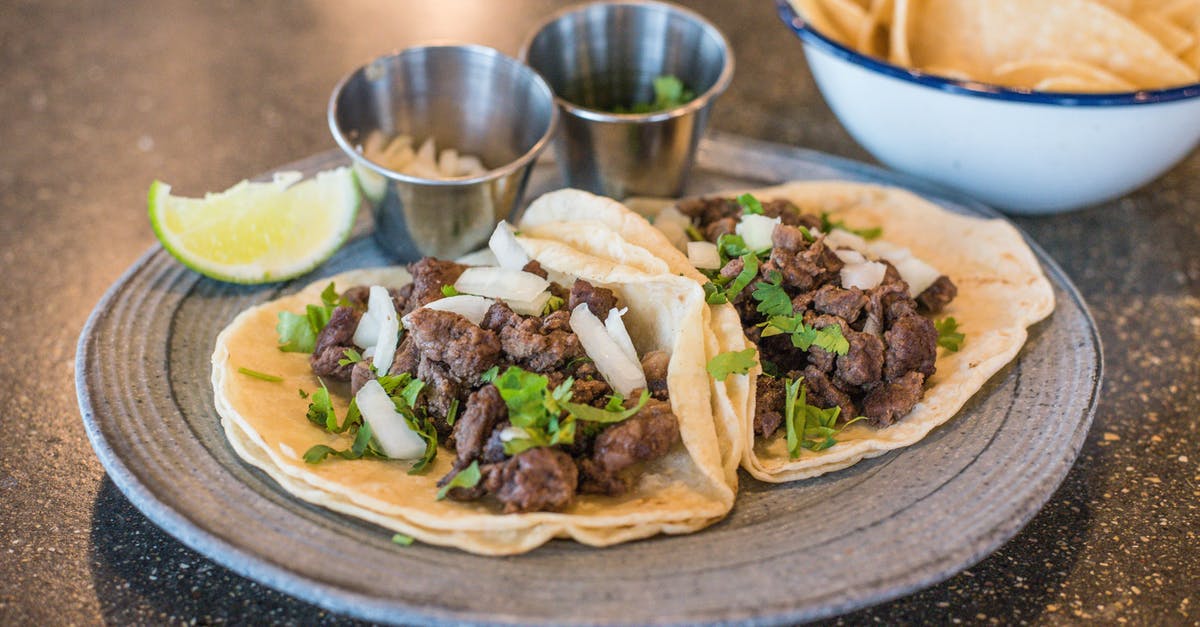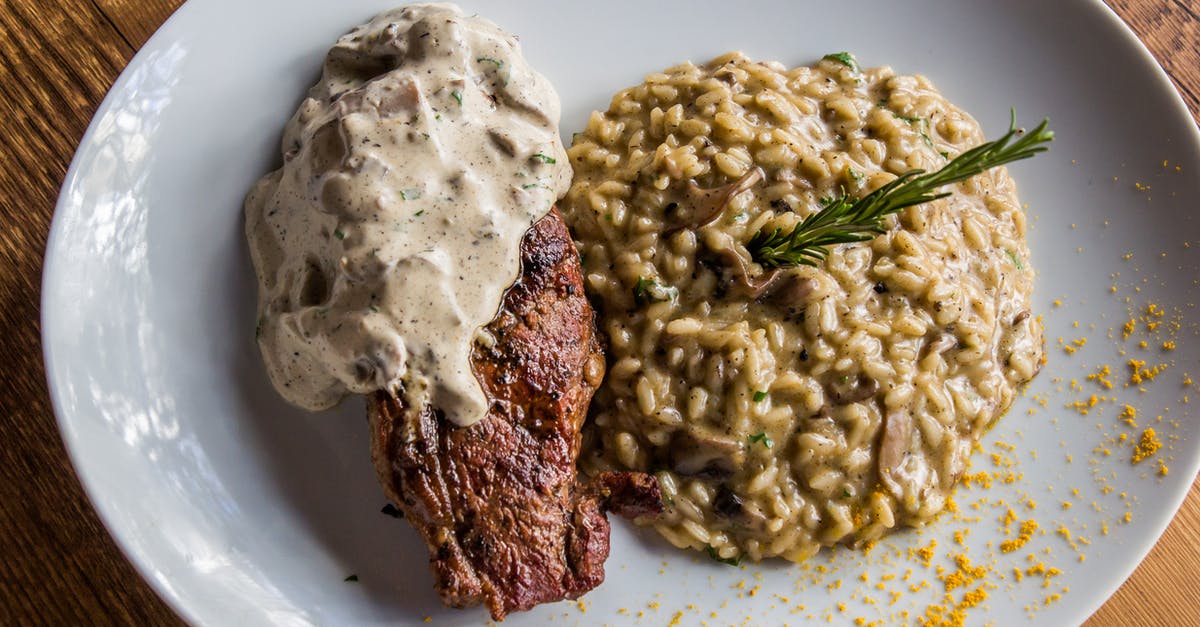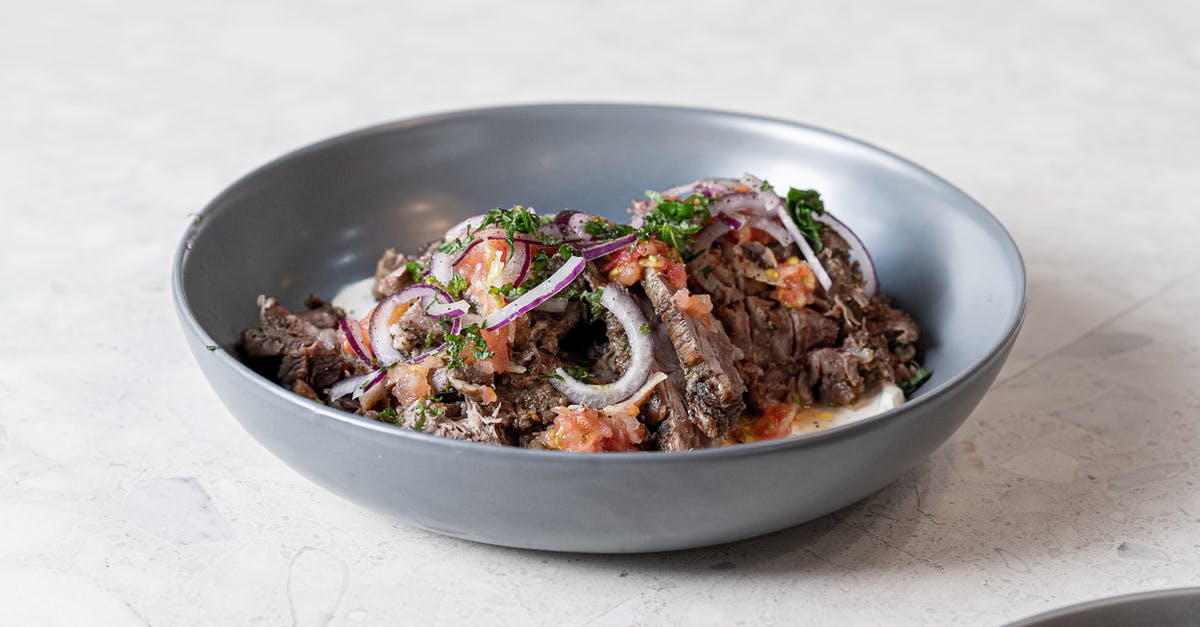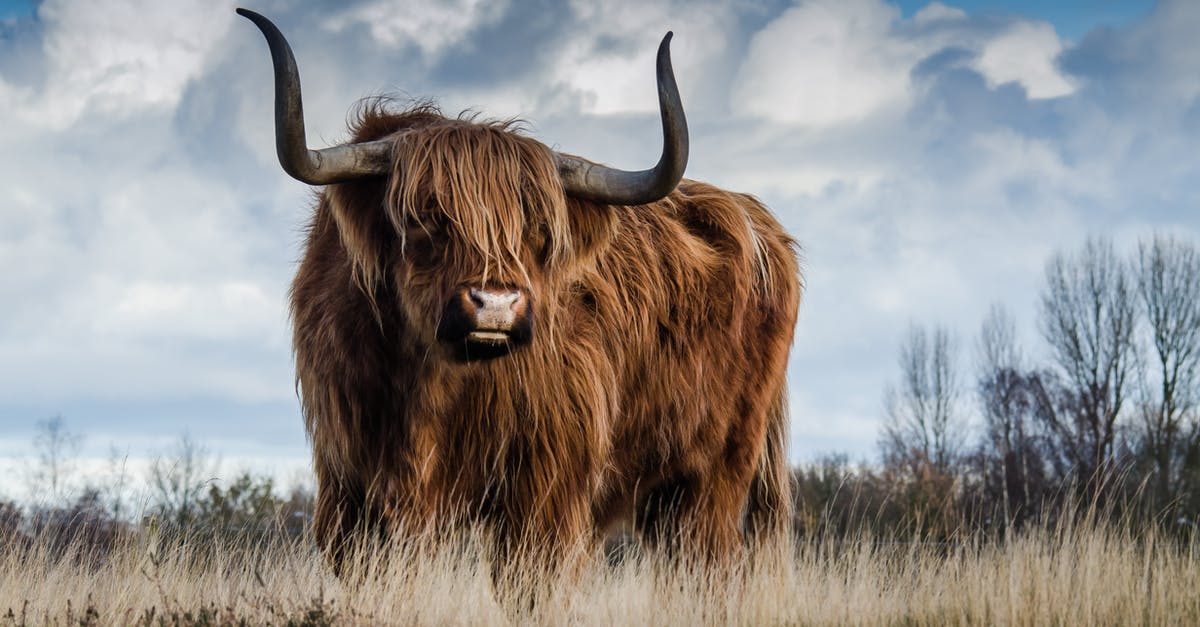Why is my boneless beef tough and unedible?

I've been baking some meat (either lamb chops or boneless beef - not sure of cut).
I coat it in oil, rub some salt on it and them immediately put it in the oven for 30 minutes at about 150f. Apparently, the oven is quick for a home oven.
What I find is after about 20 minutes the meat feels soft and tender (like I want it) however some of the inner meat still seems pinkish so I continue to cook for another 10 minutes. However, after 30-35 minutes it becomes too tough and not edible.
It seems I'm cooking for too long. How can I ensure the pink from the center of the meat is gone? Can you see what I'm doing wrong?
I have to do it with either frying, baking, or grilling.
Is it the case that I need to cook it on a much higher heat for 20 minutes?
Best Answer
Without knowing the cut of meat, thickness, etc. it is very difficult to fully answer, but take a look at this chart for steaks: http://chicolockersausage.files.wordpress.com/2012/01/cook-a-steak-blue-rare-medium-welldone.jpg (Putting link, not pic in case of copyright issues.) To summarize though, a medium steak is about 135F and still has about 25% pink in it. Med-well is about 150F and still has a hint of pink. That is the highest you should be able to reach in a 150F oven and for many cuts would definitely be too tough for many people's tastes. No pink at all is 160F plus, is not reachable in a 150F oven, and is almost always going to be dry and tough for most cuts. Lamb chops number will be roughly the same.
Their comment on well done as being a waste of a quality steak is their statement, but one I and many others would share, and definitely towards a lamb chop. I would never, ever intentionally cook one to no pink through, and certainly not without expecting it to come out dry, tough, and chewy. I would also almost always sear before putting in the oven if at all possible to form a nice crust and help hold in some juices.
Now, as to your temp stated, a well done cut of meat, one with no pink through, is one that is 160F or more. If you are really cooking at 150, this should not be possible. The only way at that low of temp to get all pink out would be to cook so long that all liquids drain except possibly rendered fat. If cooked for hours that way, something like a pulled pork or a pot roast might be tender, but only because most connective tissue has broken down. A far more typical practice would be to sear-seal the meat first and the finish in a heated, higher temp oven to allow the meat to get to your desired temperature/doneness without cooking away all the precious fluids that allow it to stay tender. You normally are cooking working muscle groups and they will very much have a tendency to become tougher the more you cook them unless using a method like braising that will start to break down the connective tissue with time.
Pictures about "Why is my boneless beef tough and unedible?"



Quick Answer about "Why is my boneless beef tough and unedible?"
After you stop cooking the meat, it will continue to rise in internal temperature for a few minutes. If you stop cooking at your final temperature, the end result will be an overcooked (and tougher, drier) piece of meat.Why is my beef so tough and chewy?
An undercooked steak will be a little tough since all the fat has not be converted into flavors and the juice has not started to flow, hence the steak is tough and chewy. An overcooked steak on the other hand, will be tougher and chewier since heat erodes all the fats and juices, leaving it hard.Does beef get softer the longer you cook it?
By its very composition, meat poses a challenge to cooks. The more you cook muscle, the more the proteins will firm up, toughen, and dry out. But the longer you cook connective tissue, the more it softens and becomes edible.Why is my cooked beef so tough?
Additionally, overcooking meat, even meat that comes from the more tender muscles, can make it tough. That's because heat causes the proteins in the meat to firm up. Overcooking also basically squeezes the moisture out of the meat, making it dry as well as tough.How do you fix beef that is too tough?
Simmer in liquid. Just like for burnt meat, if your meat gets tough and dry then you can simmer it in a little bit of broth for a couple minutes. Don't allow it to overcook again but just allow the liquid to penetrate the meat.Avoiding Tough and Chewy Flank Steak- Kitchen Conundrums with Thomas Joseph
More answers regarding why is my boneless beef tough and unedible?
Answer 2
It's certainly the cut and cooking method that are to blame.
As others said, 150F is very, very low in an oven. But... ultimately will achieve a medium-well to well done piece of beef, which depending on the cut, may or may not be pleasant to eat. You may need to vary a higher temperature and a faster cooking time, or try different methods of preparing and cooking the meat.
Here's some suggestions:
Try a marinade for the beef to help break down some of the connective tissue. This will make the meat more tender when eaten.
Try pounding the meat with a meat tenderizer or poking it all over with a fork to break the connective tissue. This will also make the meat more tender.
Try a slow cooking method, such as a crock pot, instead of the oven. Tougher cuts of meat such as Chuck (stew beef) require longer cooking times over lower heat to really tenderize the meat and again, break up the connective tissue.
Try basting the beef as it cooks, or cook it in a stew or something that will ensure it doesn't dry out while cooking.
Lower the final temperature of the meat if safe. Use a meat thermometer and go for 125-135F for a medium-rare to medium final temperature. This will depend on what type of meat you're cooking and how you intend to eat it.
Allow the meat to rest when done cooking. Place it on a plate and loosely cover with aluminum foil for 5-10 minutes. This is essential to allow the meat's "juices" to redistribute throughout the meat, and prevent them from just running out of the meat and onto your plate when you cut into it. Failing to let the meat rest properly will lead to a dry piece of meat.
Stop cooking the meat when it's about 5-10 degrees from your desired final temperature. After you stop cooking the meat, it will continue to rise in internal temperature for a few minutes. If you stop cooking at your final temperature, the end result will be an overcooked (and tougher, drier) piece of meat.
Lastly, always - always cut across the grain of meat. Cutting with the grain will always guarantee a tougher, more chewy feel in the mouth. Cutting across the grain ensures the connective tissue is severed and in small pieces, so when you chew the meat it breaks apart pleasantly.
Sources: Stack Exchange - This article follows the attribution requirements of Stack Exchange and is licensed under CC BY-SA 3.0.
Images: Chitokan, Vinícius Caricatte, Max Ravier, Pixabay
